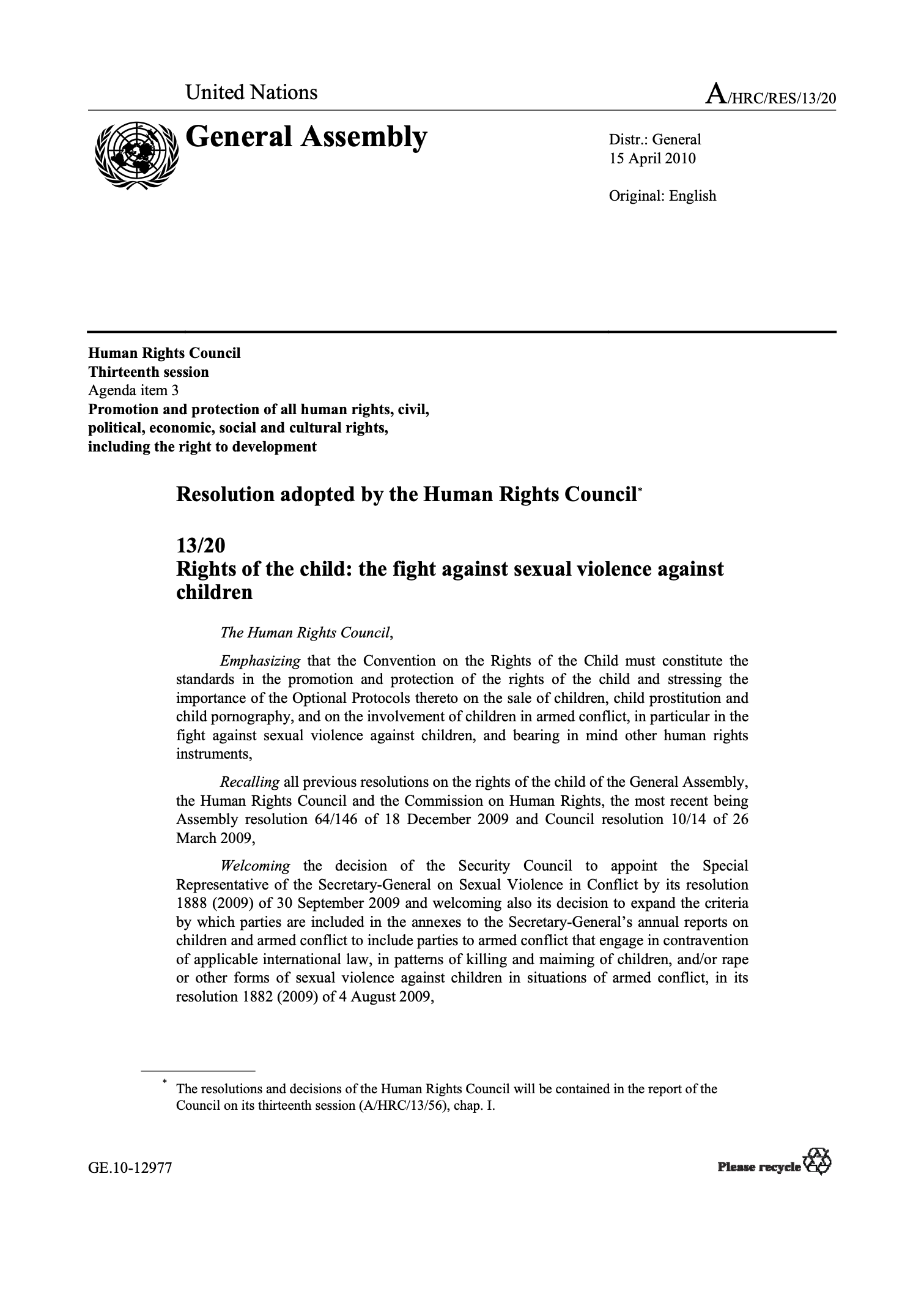2010 HRC On the rights of the child: the fight against sexual violence
Analysis of precedential value
The UN Human Rights Council is composed of elected representatives from 47 Member States; together, they are responsible for coordinating investigations of and responses to human rights violations. This document was co-drafted by representatives of 58 Member States–39 of which were not members of the sitting Human Rights Council–and adopted without a vote in April 2010.
Used as precedent
positive legal determinants
“Urges all States to take effective and appropriate legislative and other measures or to strengthen, where they exist, legislation and policy established to prohibit, criminalize and eliminate all forms of sexual violence and sexual abuse against children in all settings.” (paragraph 2(a))
“Calls upon all States to prevent, criminalize, punish and eradicate the practices of the sale of children, child slavery, commercial sexual exploitation of children, child prostitution and child pornography, including the use of the Internet and new technologies for those practices, and to take effective measures, as appropriate, against the criminalization of children who are victims of exploitation.” (paragraph 5)
human rights
“Urges all States to establish, maintain, strengthen or designate, in complementarity with effective governmental structures for children, independent children’s rights institutions, such as children’s ombudspersons or equivalents or focal points on children’s rights in existing national human rights institutions or general ombudsperson offices, that are sufficiently funded and accessible to children, which should play a key role in the independent monitoring of actions taken to promote and protect the rights of the child, including the prevention of sexual violence and abuse against children, and to promote the universal realization of rights of child victims of sexual violence and abuse.” (paragraph 2(f))
key population and community leadership
“Urges all States to ensure the meaningful participation of children in all matters and decisions affecting their lives through their expression of their views, and that those views are given due weight in accordance with their age and maturity, including in all administrative and judicial proceedings, and that disability-, gender- and age-appropriate assistance is provided to enable the active and equal participation of all children.” (paragraph 2(l))
“Urges all States to ensure an active engagement of children in the development of measures of prevention, response and monitoring of sexual violence and abuse against them, including through the promotion and development of child-led initiatives.” (paragraph 2(m))
key and vulnerable populations
“Calls upon States to pay special attention to the protection from sexual violence and abuse of marginalized and vulnerable children, such as children belonging to minorities, children with disabilities, migrant children, indigenous children, children working and/or living on the street, refugee, asylum-seeking and internally displaced children, in particular those who are unaccompanied, and children held in detention, and to take all necessary actions, including the use of detention as a measure of last resort, and to ensure that those who are victims of sexual violence receive special protection and assistance in accordance with international law.” (paragraph 4)
